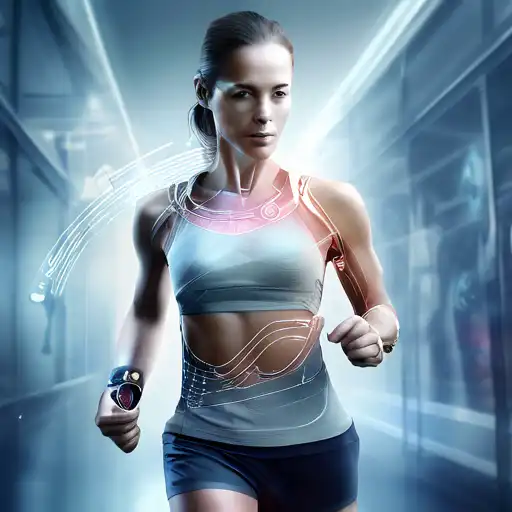The Future of Fitness: How Wearable Tech is Changing the Game
In the past decade, wearable technology has surged in popularity, becoming a cornerstone in the health and fitness industry. These devices, ranging from smartwatches to fitness bands, are not just accessories but powerful tools that monitor, analyze, and improve our health and fitness levels. This article explores how wearable technology is revolutionizing the way we approach health and fitness, making it more accessible, personalized, and efficient.
Understanding Wearable Technology
Wearable technology refers to electronic devices that are worn on the body, either as accessories or as part of clothing. These devices are equipped with sensors that track various health metrics such as heart rate, steps taken, calories burned, and even sleep patterns. The data collected is then analyzed to provide insights into the user's health and fitness, encouraging a more active and healthier lifestyle.
The Impact on Health and Fitness
The integration of wearable technology into daily life has made health and fitness more manageable and less intimidating for many people. By providing real-time feedback, these devices motivate users to achieve their fitness goals, whether it's losing weight, improving cardiovascular health, or enhancing sleep quality. Moreover, the ability to track progress over time helps in setting realistic goals and celebrating achievements, no matter how small.
Key Features of Wearable Fitness Devices
- Activity Tracking: Monitors steps, distance, and calories burned throughout the day.
- Heart Rate Monitoring: Provides continuous or on-demand heart rate readings to gauge exercise intensity.
- Sleep Analysis: Tracks sleep patterns to help improve sleep quality.
- GPS Tracking: Maps out runs, walks, or bike rides to track distance and pace.
- Water Resistance: Allows for tracking during swimming or in rainy conditions.
Challenges and Considerations
Despite their benefits, wearable devices come with their own set of challenges. Privacy concerns arise with the collection and storage of personal health data. Additionally, the accuracy of these devices can vary, and they should not replace professional medical advice. It's important for users to research and choose devices that best fit their needs and to use them as part of a balanced approach to health and fitness.
Looking Ahead
The future of wearable technology in health and fitness looks promising, with advancements in sensor technology, battery life, and data analysis. As these devices become more sophisticated, they will offer even more personalized and actionable insights, further revolutionizing our approach to health and fitness. The potential for integration with other technologies, such as virtual reality and artificial intelligence, opens up new possibilities for immersive and interactive fitness experiences.
Wearable technology is not just a trend but a significant shift in how we monitor and improve our health and fitness. By embracing these devices, we can take a more proactive and informed approach to our well-being, making the health and fitness revolution accessible to everyone.
